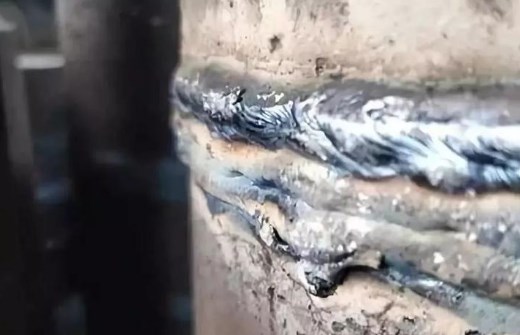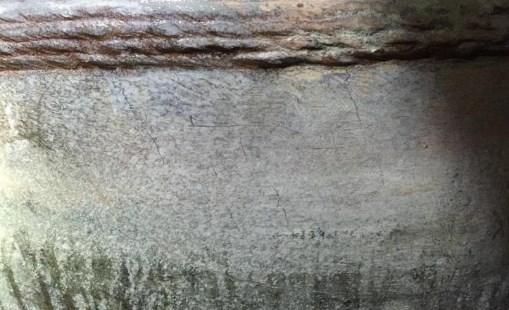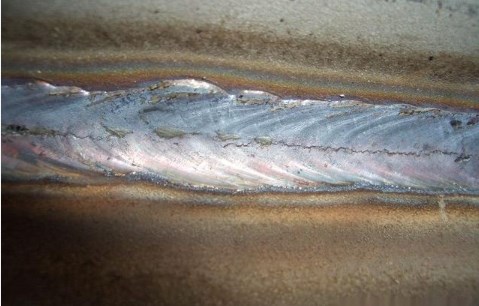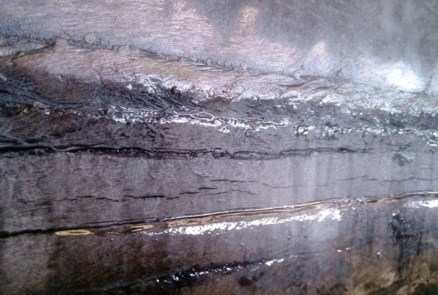Welding hot cracking, reheat cracking, cold cracking, and lamellar tearing are common types of cracks in the metal welding process, playing important roles in the welding process. This article will explain in detail the definitions, causes, and prevention methods of these cracks.
I. Welding Hot Cracking:
1)What is Hot Cracking?
Hot cracking refers to cracks that occur during or after welding, usually in the weld heat-affected zone, mainly influenced by welding thermal cycles and metal microstructure.

2)Causes of Hot Cracking:
Stress concentration caused by microstructure transformation: During the welding process, the rapid heating and cooling of metal materials cause microstructure changes, leading to localized stress concentration and crack formation.
Influence of alloy elements: During the welding process, the migration and changes of alloy elements may lead to uneven microstructure in the weld area, increasing the risk of hot cracking.
Residual welding stress: After welding, residual stress exists in the weld and its surrounding area. If these stresses exceed the bearing capacity of the metal, hot cracking may occur.
3)Prevention and Treatment Methods:
Reasonable selection of welding parameters: Control the preheating temperature, welding current, and welding speed to avoid excessive heat input and rapid cooling, reducing the occurrence of hot cracking.
Optimization of welding process: Adopt appropriate welding sequences and techniques to reduce residual stress concentration during welding and lower the risk of hot cracking.
Proper selection of welding materials: Choose suitable welding materials and fillers to minimize the uneven migration of alloy elements and microstructure changes.
II. Reheat Cracking:
1)What is Reheat Cracking?
Reheat cracking refers to cracks that occur during welding or reheating after heat treatment, usually in the welded metal's weld or heat-affected zone.

2)Causes of Reheat Cracking:
Liquid-phase melting of low-melting-point components: During reheating, low-melting-point components in the weld area may be melted again, leading to local liquid-phase melting and crack formation.
Release of residual stress: Reheating causes the redistribution of residual stress in the welding area. If the residual stress is too high, it may cause crack formation.
3)Prevention and Treatment Methods:
Avoid excessive reheating: Minimize the number of times the metal is reheated and avoid excessively high reheating temperatures to reduce the occurrence of reheat cracking.
Optimization of welding process: Use appropriate welding techniques and parameters to reduce residual stress during welding and lower the risk of reheat cracking.
III. Cold Cracking:
1)What is Cold Cracking?
Cold cracking refers to cracks that occur in metal materials at room temperature, usually during the cooling stage after welding.

2)Causes of Cold Cracking:
Changes in microstructure: After welding, rapid cooling causes changes in the metal's microstructure, which may lead to localized stress concentration and cold cracking.
Impact of residual stress: Residual stress after welding may cause deformation of the metal during cooling, promoting the formation of cold cracks.
3)Prevention and Treatment Methods:
Proper preheating and post-weld heat treatment: Slowing down the cooling rate during the welding process through preheating and post-weld heat treatment can reduce the risk of cold cracking.
Control of residual stress: By using appropriate welding techniques and parameters, control the generation of residual stress during the welding process to reduce the occurrence of cold cracking.
IV. Lamellar Tearing:
1)What is Lamellar Tearing?
Lamellar tearing is a type of ductile fracture characterized by layered cracks on the surface or within the weld.

2)Causes of Lamellar Tearing:
Effect of hydrogen: During the welding process, metal materials may be contaminated by hydrogen, which accumulates at grain boundaries, leading to embrittlement and the formation of lamellar tearing.
Metal embrittlement under high-stress conditions: During welding, metal materials under high-stress conditions may become brittle, increasing the risk of lamellar tearing.
3)Prevention and Treatment Methods:
Preheating and post-weld heat treatment: Proper preheating and post-weld heat treatment can reduce the hydrogen content during the welding process, lowering the risk of lamellar tearing.
Reduction of residual stress: By controlling residual stress during the welding process using appropriate techniques and parameters, and minimizing the stress concentration of metal materials, the risk of lamellar tearing can be minimized.
In summary, welding hot cracking, reheat cracking, cold cracking, and lamellar tearing are common types of cracks in the welding process, each with its own causes. Therefore, appropriate prevention and treatment measures should be taken for different types of cracks to ensure welding quality and structural safety.
Related articles:
1. How welding defects (pores, undercuts) affect weld joint?
2. How to avoid blow holes defect in submerged arc welding?
3. How to Identify the 7 Most Dangerous Welding Defects?
4. Tips for Troubleshooting Common MIG Weld Defects
5. Undercut Welding Defect: Causes, Prevention, and Repair







